Evelyn’s Table opened in Soho in late 2020. It is an unusually small restaurant with just a dozen covers, run by head chef Luke Selby and his two brothers (Nat and Theo). Luke was the Roux Scholar in 2017 and had previously worked at Le Manoir au Quat’ Saisons, Gordon Ramsay, Hide and Dabbous. He also did a stage at Ryugin in Tokyo as his reward for winning the Roux Scholarship. The restaurant was awarded a star in the 2022 Michelin guide. The dining room is downstairs at the Blue Posts pub, a series of bar stools arrayed around a counter. There is a tasting menu only, priced at £95, with a wine pairing available at £80. The restaurant name, incidentally, is from the main character, Evelyn Mulwray (played by Faye Dunaway), of the great 1974 American film noir ‘Chinatown’.
The wine list had 151 labels and ranged in price from £38 to £219, with a median price of £82 and an average markup to retail price of almost exactly 3 times, which is fair for central Lomdon. Sample references were Geyer Wine Company Muscat/Semillon blend at £55 for a bottle that you can find in the high street for £29, 'Orange Trocken' Riesling 2020 from Sybille Kuntz at £68 compared to its retail price of £25, and Donkey & Goat ‘The Bear' El Dorado Red Blend 2017 at £96 for a wine that will set you back £35 in the high street. For those with the means there was Marthe Henry-Boillot Sous La Velle Meursault 2018 at £160 compared to its retail price of £71, and Christian Tschida Stockkultur Pinot Noir 2020 at £219 for a wine whose current market value is £90. The list was quite eclectic, just 39% French and with wines from Georgia, The Czech Republic and Slovakia as well as a full section of “skin contact” wines.
The meal began with attractively presented sashimi of line caught gilt head bream. The fish (from Cornwall) was marinated lightly in rice vinegar that was flavoured with kombu and mirin. The fish was served with a Sicilian blood orange reduction, garnished with pickled daikon and umeboshi purée. The dish was finished with a fruity Vallee des Baux olive oil from Provence and a small shisho leaf. The fish was certainly fresh and the blood orange reduction provided acidity, but for me the overall effect was a little sweet, which I am not sure quite worked (14/20).
This was followed by beef tartare using use fillet of beef from shorthorn cows that were raised in the Lake District, the meat being aged for 28 days. The beef was diced and mixed with a light sesame oil and cured kombu seaweed, providing umami flavour. This was topped with miso emulsion, pickled shimeji mushrooms and tempura of wild stinging nettle. The dish rests on a wasabi leaf (which is grown in Hampshire). On top of the beef was sliced wasabi stem and a puree of wasabi rhizome root. The wasabi used in the puree and stem is sourced from Ikadaba, Amagi in Shizuoka prefecture, an area is renowned for high quality wasabi due to its deep valleys and crystal-clear spring water. This particular wasabi was from a fifth-generation wasabi grower called Kichiei Shioya, the wasabi taking six years to grow. This Japanese wasabi is expensive (around £120 a kilo) but has a far superior flavour to the UK grown wasabi root. The idea is that you wrap the tartare up in the wasabi leaf and then eat with your hands. The beef had excellent flavour and the wasabi was lovely, with its mild spiciness an excellent foil for the meat, with the slight sourness of the pickled mushrooms providing balance (17/20).
The next dish was pot-caught cuttlefish from Hayle in Cornwall, prepared in two ways. The tentacles were braised slowly at 65 degrees and the main body scored very finely to help tenderise it, and then cooked very quickly a la plancha. The kitchen makes their own ichiban dashi, which is the first press of the traditional Japanese dashi stock with high quality katsobushi, mineral water and kombu seaweed from Hokkaido. The dashi is light in style and infused with smashed lemongrass, kaffir lime leaf and fresh kaffir lime zest, which acts to perfume the dashi and keep it light. The cuttlefish came with quickly cooked French asparagus from the southwest and raw peas from the Provençal village of Eyragues. The cuttlefish was tender, the peas good but not quite of the calibre of ones I recall eating raw at Ventamiglia market. The stock was certainly light, and could be argued to be a little too delicate. For me a little more depth of flavour would have worked well (14/20).
There was then a little lamb bao. Steamed buns were made fresh and topped with black sesame. The filing was Herdwick lamb belly which was minced, seasoned with black pepper and cumin, and then flame grilled over Japanese binchotan charcoal. This was served with a ketchup made with dates and hoisin, pickled mouli and a Japanese spice blend called togarashi, which is made up of chilli flakes, seaweed and sesame seeds. The buns were pillowy and soft, the lamb having good flavour and enlivened by the togarashi (16/20).
The final savoury course was roasted Herdwick lamb rack. The lamb was from the Lake District and aged for a fortnight. The bones are trimmed and the meat stuffed with a farce made with lamb sweetbreads that are flavoured with tarragon. The lamb was then tied up and roasted classically in a pan, rested and then smoked over burning hay to finish. The meat was served with a pomme Anna made with rosemary butter, onion and wild garlic puree and goat curd infused with lemon and garlic. A lamb sauce was made with the bones and finished with a concassé of San Marzano tomato and pickled wild garlic and capers. The meat was carefully cooked and I really liked the potato, which had nicely taken on the flavour of the rosemary. I was a little less convinced by the sweetbreads, which had somewhat limited flavour, but overall this was certainly a good dish (15/20).
A pre-dessert was based on the last Yorkshire rhubarb of the season. Rhubarb juice was infused with Taiwanese oolong tea and a small piece of rhubarb and custard and served in a glass. This was served alongside a sweet sable biscuit, set creme anglaise infused with bourbon vanilla, Italian meringue toasted over the binchotan charcoal, and then finished with poached Yorkshire rhubarb on top. This was a simple but pleasant pre-dessert, the sharpness of the rhubarb balanced by the custard (14/20).
The main dessert featured French gariguette strawberry, sake savarin and sake kasu, a paste that is the leftover pulp (the lees) from the sake making process. A strawberry jus was infused with lemon verbena as a base for the dish. Milk jelly was then infused with bourbon vanilla with a savarin (a savoury dough like a baba) soaked in a sweetened junmai sake (a sake made only with pure rice and water). This was then garnished with a strawberry tuile and fresh gariguette strawberries, finished with a sake kasu ice cream - made with the leftover rice from the sake making process that was rippled with a sorbet of the gariguette strawberries. The strawberries had nice flavour and the tuile provided an interesting textural contrast (15/20).
Service was capable and friendly, and the bill came to £149 per person including corkage and service. If you shared a modest bottle of wine between two then a typical cost per person might be around £130 or so. Evelyn’s Table offers an intimate experience, with good ingredients and appealing dishes, the beef tartare being the star dish of the meal.


















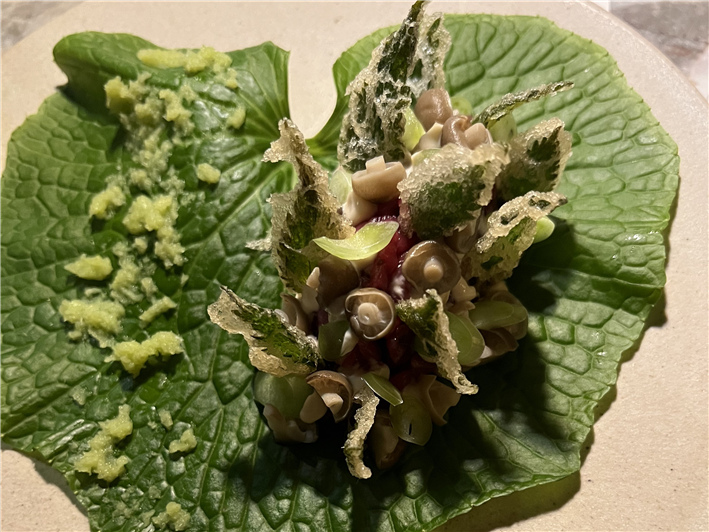

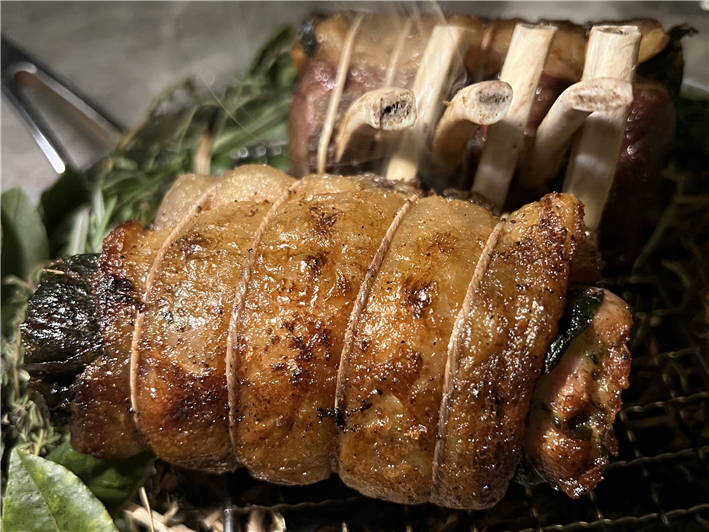
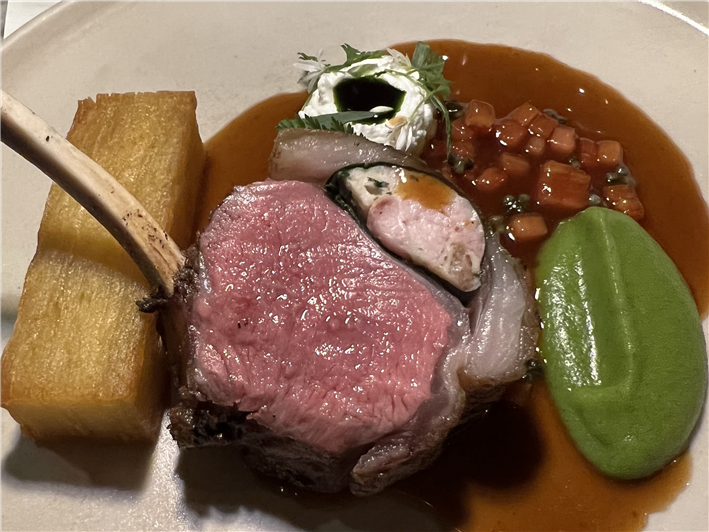

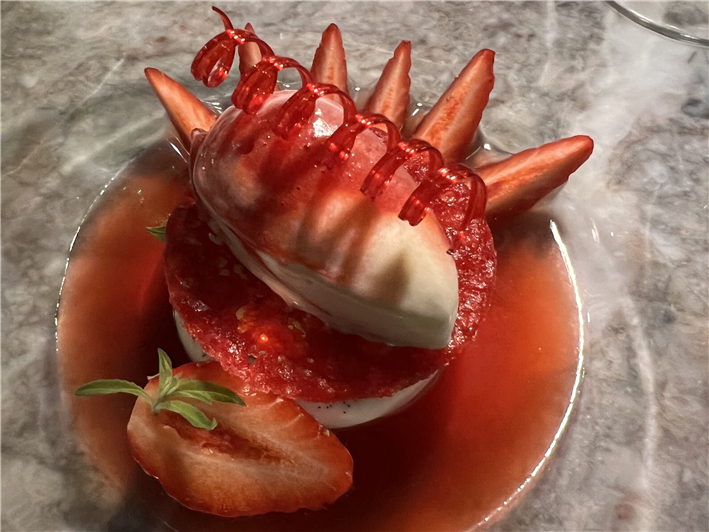
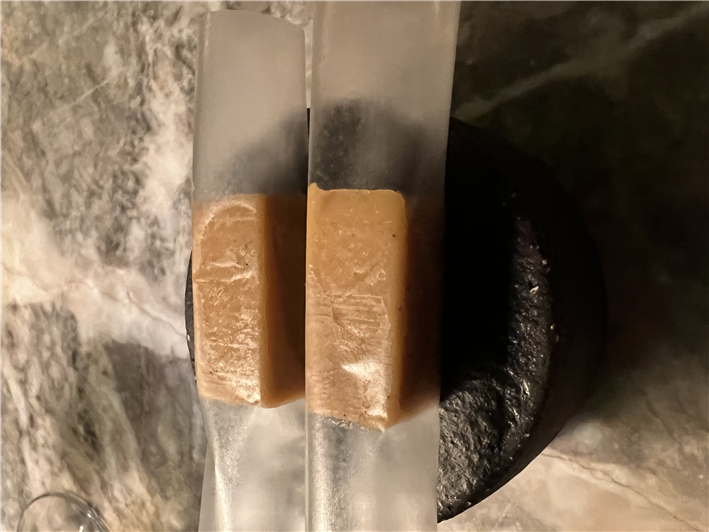

Merlin Guggenheim
I had dinner there last night and I must say it was thoroughly enjoyable, with lovely, harmonious food, great flavour combinations and a wonderful wine pairing. While I agree that to this point I have eaten the best dinner in London at the Ritz, it was far superior in my view in every aspect than a dinner I recently had at SoLa. I will certainly go again when in London and believe their efforts to be worth another visit on your part as well.